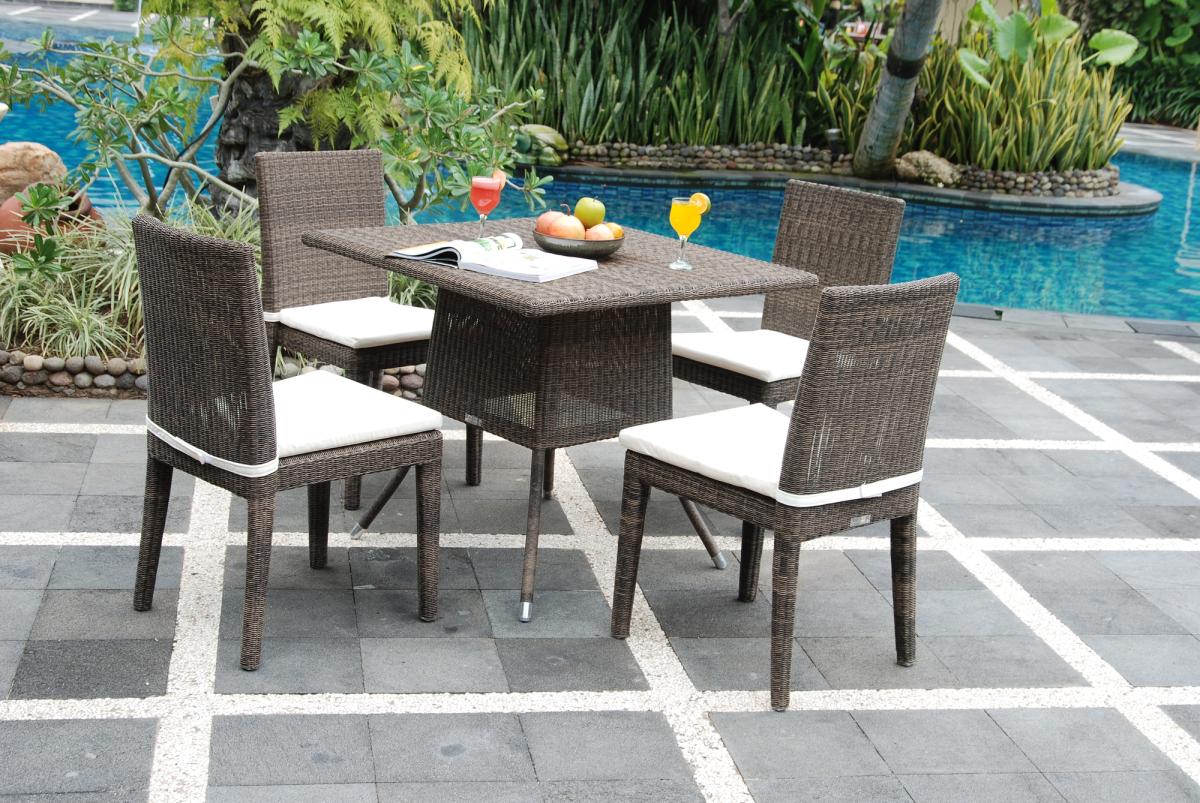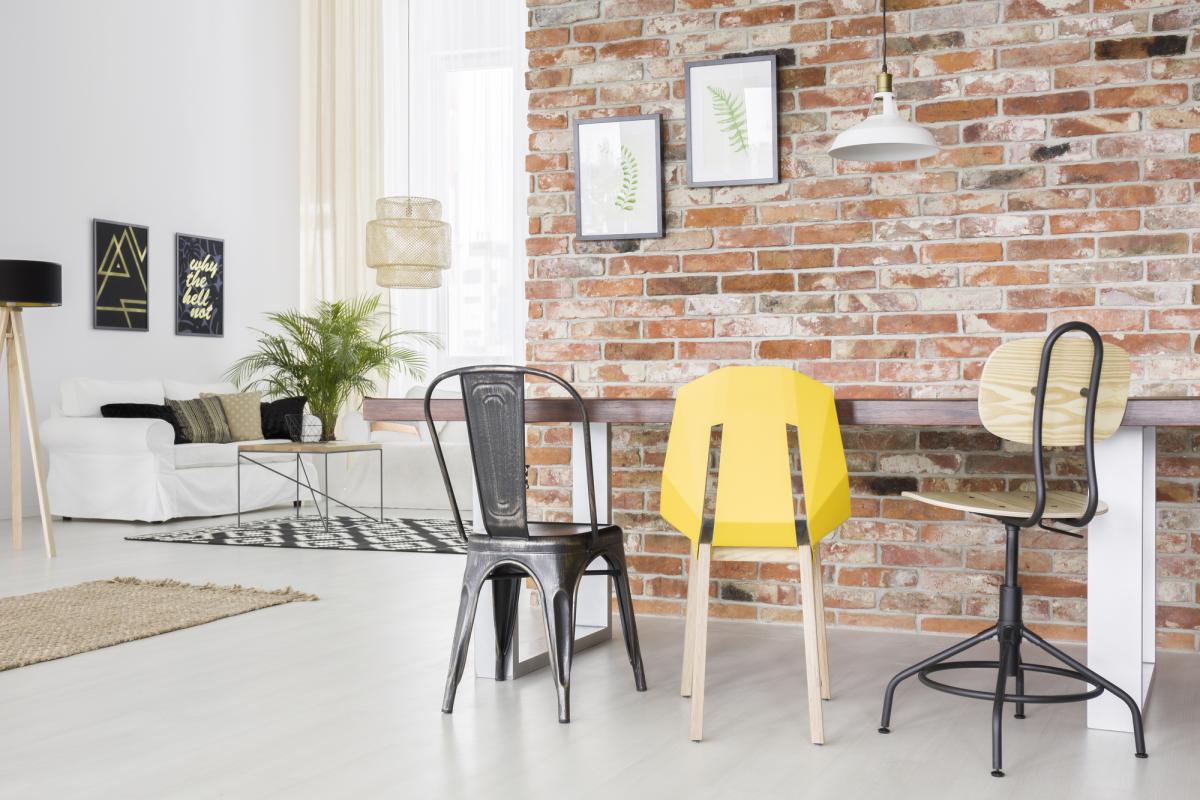In the dance of decoration, each piece is a note in the symphony of style.
And if there is one element that is both practical and stylish, It's the humble chair.
From the ornate thrones of monarchs to the ergonomic chairs of our contemporary offices, these seats have a rich history and iconic presence in our spaces.
But chairs are more than just furniture; are expressions of art and functionality, reflecting not only the evolution of design, but also the cultural values and aesthetic aspirations of an era.
In this dive into the world of chairs, we will explore not only its evolution over time, but also its variety of styles and materials, and how they play a vital role in creating spaces that are both visually stunning and functionally comfortable.
Come with us as we uncover the fascinating universe of chairs in decoration.
The History of Chairs: The Seat of Nobility
Chairs have a history that goes back thousands of years.
In ancient Egypt, were reserved for the highest echelons of society, while in Ancient Greece, were a symbol of dignity and status.
The Romans valued them so much that they adorned them with ivory and gold.
However, during the Middle Ages in Europe, the chair was a luxury accessible only to the most privileged.
With the Renaissance, the chair has re-emerged as a statement piece in the salons of aristocracy and royalty.
Many artists have dedicated their skills to chair design, transforming them into true works of art.
The Industrial Revolution brought with it mass production, making chairs more accessible and expanding their presence in homes of all social classes.
Variety of Styles: From Classic to Contemporary
Today, the world of chairs is as vast as the imagination.
From classic designs, like the elegant Louis XV chair, to the minimalist functionality of Scandinavian design, There is a chair for every taste and need.
Chairs can be carved from solid wood, forged in metal, molded in plastic or even woven into natural fiber, exploring a multitude of materials and techniques.
In addition, contemporary styles defy expectations, with futuristic designs that incorporate technology and innovation.
Ergonomic chairs, for example, are designed for support and comfort, promoting healthy posture during long periods of work or study.
Meanwhile, designer chairs are becoming real collector's pieces, with collaborations between renowned designers and furniture manufacturers that result in unique and exclusive creations.
Chairs in Decoration: The Importance of the Perfect Seat
in interior decoration, chairs play a fundamental role.
They not only provide functional comfort, but also contribute significantly to the style and atmosphere of a space.
A well-chosen chair can be the focal point of a room., adding a touch of color, texture or shape that complements the rest of the decor.
In addition, Chairs are versatile pieces that can be easily adapted to different environments.
A stylish designer chair can add sophistication to a living room, while comfortable and inviting dining chairs can transform a simple meal into a memorable experience.
In commercial spaces, such as restaurants and cafes, chairs are not just seats, but they are also part of the establishment’s visual identity and branding.
Iconic Chairs and Their Designers
Many of the iconic chairs we know today were created by furniture design visionaries.
For example, the chair “Wassily”, designed by Marcel Breuer in 1925, is recognized for its revolutionary design, which incorporates chromed steel tubes and leather, inspiring future generations of designers.
Likewise, the chair “Eames Lounge Chair”, created by Charles and Ray Eames in 1956, is an icon of modern design, famous for its unparalleled elegance and comfort.
Sign up to receive Decor News first!
These visionary designers not only created exceptional chairs, but they also influenced the entire field of furniture design with their creativity and innovation.
Craft Manufacturing Techniques
One of the most fascinating characteristics of the chairs is the variety of artisanal techniques used in their manufacture..
Since time immemorial, Skilled artisans have worked with a variety of materials, including wood, metal, fabric and leather, to create chairs that are true works of art.
Joinery is one of the oldest and most widely used techniques in making chairs., involving meticulous woodworking to carve elegant and durable shapes.
Another common technique is tapestry, which consists of applying fabrics and upholstery to add comfort and style to chairs.
In addition, metallurgy is often employed in creating support structures and ornamental details, adding an additional dimension of beauty and durability to handcrafted chairs.
These traditional techniques require skill, patience and a deep understanding of the materials, resulting in chairs that are true works of art, destined to be enjoyed by generations.
Glossary of Chair Design Terms
To provide a deeper understanding of the concepts discussed in the article, It is helpful to include a glossary of specific chair design terms.
Here are some common terms and their definitions:
- Ergonomics: The study of object design, including chairs, to ensure they are comfortable and safe for human use, taking into account factors such as posture, comfort and efficiency.
- Upholstery: The process of covering the seat and back of a chair with padded materials, like foam, fabric, leather or vinyl, to provide user comfort and support.
- Level: A horizontal structure at the bottom of a chair, often used to support the user's feet, providing additional comfort and reducing fatigue.
- Chair Feet: The lower supports of a chair, usually made of wood, metal or plastic, that provide stability and support to the chair structure.
- Backrest: The part of the chair designed to provide support to the user's lower back and upper back, helping to maintain an ergonomic posture while sitting.
- Seat: The flat surface of a chair on which the user sits, often padded and covered with fabric or leather for additional comfort.
- Frame: The internal support structure of a chair, usually made of wood, metal or plastic, which gives shape and stability to the piece.
- Chair Style: Refers to the overall design and aesthetics of a chair, which can range from classic to modern, minimalist to ornate, depending on the designer's preferences and current design trends.
- Chair Material: The type of material used to manufacture the chair, which may include wood, metal, plastic, natural fiber, among others, each with its own durability characteristics, aesthetics and maintenance.
- Chair Finish: The final surface treatment process applied to the chair to improve its appearance and protect it from damage, which may include painting, varnish, polishing or special coatings.
By Understanding These Chair Design Terms, readers will be able to better appreciate the different aspects and features of the chairs discussed in the article, enriching your understanding of the fascinating universe of furniture.
Chair Maintenance and Care Tips
Keeping your chairs in good condition is essential to ensure their durability and beauty over time..
Here are some maintenance and care tips that will help you preserve your chairs.:
- Regular Cleaning: Clean chairs regularly to remove dust, dirt and food waste. Use a vacuum cleaner with a soft brush attachment to clean between crevices and seams.
- Stain Cleaning: For light stains, use a clean, damp cloth with warm water and mild soap to clean the affected area. Avoid using abrasive cleaning products, as they can damage the finish of the chair.
- Stain Protection: Consider applying a fabric or leather protectant to help repel liquids and prevent stains.. Always follow the manufacturer's instructions when using protective products.
- Avoid Exposure to Direct Sunlight: Avoid placing your chairs in places where they receive direct sunlight for long periods, as this can cause discoloration and deterioration of materials.
- Scratch Protection: Use felt pads or protective mats on chair legs to avoid scratching the floor.. When moving chairs, lift them instead of dragging them to avoid damage to the feet and floor covering.
- Tightening of Screws and Joints: Regularly check that the chair's screws and joints are securely tightened. If necessary, squeeze them gently to ensure the stability of the chair.
- Damage Repair: If your chairs have significant damage, like cracks in wood, tears in the upholstery or loose parts, consider hiring a qualified professional to carry out the necessary repairs.
- Proper Storage: If you need to store your chairs for an extended period of time, make sure you do it in a clean environment, dry and free from moisture. Protect chairs with breathable fabric covers to prevent dust accumulation and exposure to insects and moisture.
By following these simple maintenance and care tips, you can ensure that your chairs remain beautiful and functional for years to come, providing comfort and style to your space.
Always remember to consult the manufacturer's instructions specific to each type of chair and material to obtain the best maintenance results..
Conclusion: The Seat of Creative Expression
In short, Chairs are more than just furniture.
They are witnesses of history, expressions of style and tools to create spaces that reflect our personality and creativity.
From the ornate thrones of kings to the ergonomic chairs of modern workers, These seats continue to evolve, inspiring us and enriching our lives with its graceful and functional presence.
So, the next time you sit down, remember the fascinating journey behind this modest seat – the chair, where form and function are in perfect harmony.


